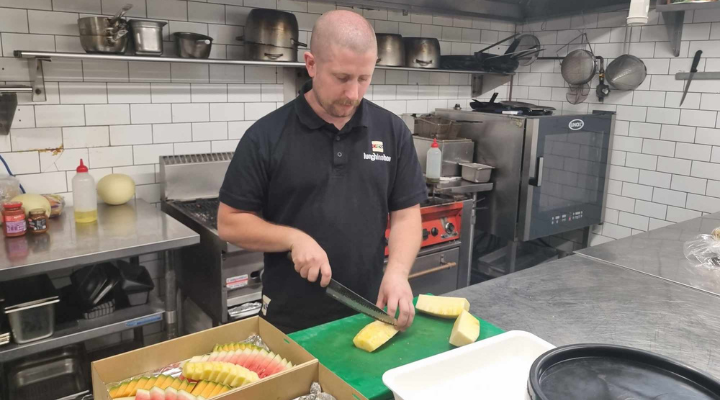
Food has always been at the core of Seddon Frew’s working life, from fine dining restaurants to corporate catering.
So what was it that first attracted this chef with an haute cuisine pedigree to buy a Lunch in a Box business?
“I had just spent 10 years in cooking at fine dining restaurants, which I loved, but I have a young family, so I wanted to find a more flexible alternative,” he says.
“I started researching different cafe options, then focused on catering as a better route to being my own boss. It definitely has better hours!”
Seddon came across Lunch in a Box after chatting with a friend; once he investigated the flexible business model he could see its huge potential.
“Lunch in a Box creates healthy, fresh, single serve meals. The majority of the business is repeat. There are lots of corporate clients, as well as churches and universities – we do thousands of boxes for them. This is a perfect food option for unis, they want simple meals they can distribute individually.”
Lunch in a Box specialises in individual meals
Customers can pick and choose from the menu; universities like classic boxes with sandwiches and salads while corporates opt for a fancier and more expensive menu, he says.
“Providing individual meal boxes is a real niche. It’s what Lunch in a Box specialises in, and our prices are very competitive,” Seddon says.
“I have an existing business catering events and weddings on weekends, so I have access to a commercial kitchen. It made sense to utilise the kitchen during the week with another business.”
While Lunch in a Box is a seven-day–a-week business, the greatest demand is Monday to Friday. On a busy day Seddon and his assistant chef can process as many as seven client bulk orders.
Lunch in a Box has proven to be a flexible business. Some days Seddon is able to complete orders by lunchtime, so he’s free to pick up his three children from school.
He starts work early to get the orders completed and delivered in time. He normally outsources the delivery but steps in to deliver when necessary.
“Some of our customers like the personal relationship,” he admits. “They can call on me for last minute orders, and I try to be flexible.”
Seddon has operated his franchise business in Melbourne for about 18 months. As the business was an add-on to an existing commercial kitchen there were minimal set-up costs. However, franchisees don’t need an existing hospitality business, they can set up a dark kitchen.
A tried-and-tested business
Lunch in a Box invests in Google AdWords and social media platforms to drive business to franchisees.
“It only took me a couple of months to build up a bit of a presence, using highly rated catering delivery platforms such as Eat First and Hamper,” Seddon says.
The Lunch in a Box business has been successfully trading since 2007.
“It’s a proven concept, it’s not a start-up, so I felt comfortable and confident it would work for me,” Seddon says.
“I had a few questions about running the business and the franchisor, Wayne, has been really helpful. He has been very supportive and committed to growing the business.”
Seddon plans to take on more staff as the business grows.
“I love it, with Lunch in a Box I have everything I need at my fingertips. I don’t have to worry about all the processes because all the instructions and guidelines for running Lunch in a Box are clearly laid out, the set up was simple and the back end is very streamlined,” he says.
“We’re about on track, where I thought we would be. Now I want to try and double what we do, each year.“

